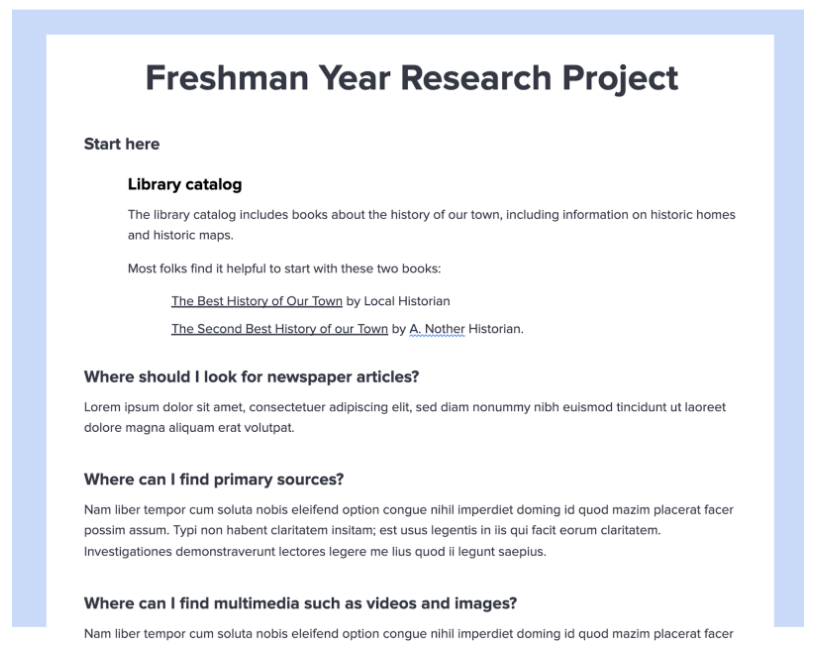This blog post is authored by our very own Springy: Jennifer Forgit.
You have great content – but it lives in many different places. Move it into LibGuides and make sure patrons have all of the tools they need in one place!
Let’s say your students have a big research project in the fall and you have a pathfinder saved as a Word document. You could upload the document to your guide, but that means one extra step for your patrons to get the information. In this workshop, we’ll look at an existing document written as a handout and talk about how to bring it into LibGuides.
When you move content into LibGuides it means:
- Better access:
- You decide who can access it, whether that’s the public, staff only, or a subset of either with a password or authentication (LibGuides CMS Only).
- Turn public documents, like pathfinders, into research guides that are available to everyone 24/7 and not just those who find the brochure rack at the reference desk. Plus, no special ‘Word’ software required to view them and they’re mobile-friendly.
- Centralized location:
- Between cloud drives, email and websites, staff sometimes have to search through several online locations to find what they need. Move it into LibGuides, and you can keep everything in one place, and easy to find.
- Not So Text-Heavy:
- .Docs are text-heavy. Moving content into LibGuides allows you to take advantage of embedded video/audio media, interactive widgets, discovery layer search boxes, upcoming events, and more.
.Doc meet LibGuide
In November and December, we’re offering a workshop called Creating Content-Rich Guides. This session will look at how to take existing content, whether it is a Word document, old wiki page, blog post (or something else!) and turn it into a useful, usable LibGuide.

Seems straightforward, right? A little copy/paste magic and it’s in LibGuides.
If you want readers to have the best experience, you’ll need to think about how to divide your content into pages and boxes so that readers aren’t left to stare at 1000 words or more all in the same box.
Write for the Web
According to a study cited by the Nielsen Norman Group, “On the average Web page, users have time to read at most 28% of the words during an average visit; 20% is more likely.”
With online users scanning so little of your content, it’s vitally important that it is broken down into chunks that can be easily skimmed and includes headings and subheadings for better wayfinding. In our Content Rich Guides workshop, you’ll learn best practices for writing for the web and make sure that any content you bring into LibGuides is optimized for your online readers.
Join us for Creating Content-Rich Guides
This session includes active discussion so you’ll need to have a microphone available.
Pick the time that works for you:
- Thursday, November 14
- 9:00am – 10:00am U.S. ET (UTC -5)
- Thursday, November 14
- 2:00pm – 3:00pm U.S. ET (UTC -5)
- Tuesday, December 10
- 2:00pm – 3:00pm U.S. ET (UTC -5)



Hi there!
Will the Creating Content-Rich Guides workshop become one of the recorded training sessions?
Hi Hilary –
We don’t usually post recordings of the workshop sessions, but we are working on creating a general recording that is a variation on the workshop so that everyone can take a look at the information we’re sharing in those workshops. The workshop sessions will be a regular thing on our calendar, so if December’s date / time doesn’t work for you, keep an eye out for more in future!
Anna 🙂
Thanks Anna for your reply. Our team is particularly interested in the Writing for the Web advice for content in LibGuides, so we look forward to a future variation!